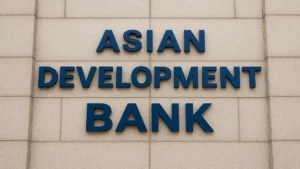The Indian e-commerce landscape is undergoing a transformative evolution, with Deloitte’s latest report forecasting a monumental growth trajectory. The projection of reaching $325 billion by 2030 represents not just a number, but a fundamental shift in how India conducts commerce. This 21% Compound Annual Growth Rate (CAGR) signifies a digital revolution that’s reshaping the retail ecosystem.
Sectoral Growth Analysis
E-commerce Sector: Leading the Digital Frontier
The e-commerce sector’s projected 21% CAGR is driven by multiple factors:
Digital Infrastructure Development
- Expansion of high-speed internet connectivity
- Growing smartphone penetration, expected to reach 1 billion users by 2026
- Implementation of 5G technology enhancing online shopping experiences
Consumer Behavior Evolution
- Increased trust in digital payment systems
- Growing comfort with online shopping across age groups
- Shift from offline to online shopping, accelerated by the pandemic
Market Expansion Strategies
- Penetration into Tier 2 and Tier 3 cities
- Vernacular language support on e-commerce platforms
- Customized offerings for different demographic segments
Retail Sector: Traditional Commerce Adaptation
The 8% growth rate in the retail sector involves:
Omnichannel Integration
- Brick-and-mortar stores developing online presence
- Implementation of digital payment solutions
- Integration of inventory management systems
Customer Experience Enhancement
- In-store digital experiences
- Augmented reality for product visualization
- Personalized shopping experiences through data analytics
FMCG Sector: Innovation and Expansion
Growing at 10%, the FMCG sector is focusing on:
Product Innovation
- Development of health-conscious products
- Sustainable packaging solutions
- Personalized product offerings
Distribution Network Enhancement
- Direct-to-consumer (D2C) channels
- Partnerships with e-commerce platforms
- Rural market penetration strategies
Demographic Analysis and Market Segmentation
Affluent Household Trends
The increase in affluent household contribution is characterized by:
Premium Product Preferences
- Shift towards luxury and premium brands
- Emphasis on quality over price
- Interest in international brands
Consumption Patterns
- Bulk purchasing behavior
- Preference for subscription-based models
- Early adoption of new products and categories
Middle-Class Consumer Behavior
The growing middle class shows:
Value-Seeking Behavior
- Balance between quality and price
- Attraction to deals and discounts
- Brand loyalty when coupled with value
Digital Adoption
- Increasing comfort with online shopping
- Preference for EMI and buy-now-pay-later options
- Use of price comparison tools
Non-Affluent Consumer Strategies
This segment demonstrates:
Smart Shopping Approaches
- Preference for smaller pack sizes
- Focus on essential purchases
- attraction to private label brands
Digital Participation
- Growing use of mobile payments
- Attraction to cash-back offers
- Participation in social commerce
E-commerce Evolutionary Trends
Quick Commerce Revolution
The rapid growth of quick commerce is marked by:
Operational Innovations
- Dark store networks in urban areas
- Predictive inventory management
- Hyperlocal delivery partnerships
Consumer Adoption Factors
- Need for instant gratification
- Time-sensitive purchase requirements
- Convenience-driven shopping behavior
Traditional E-commerce Adaptation
E-commerce platforms are evolving through:
Category Expansions
- Growth in high-value segments
- Introduction of new categories
- Category-specific shopping experiences
Technological Advancements
- AI-powered personalization
- Virtual try-ons for fashion and beauty
- Advanced search and discovery features
Strategic Industry Developments
Mergers and Acquisitions Landscape
The 60% related-area M&As are driven by:
Vertical Integration
- Supply chain optimization
- Technology capability enhancement
- Market share consolidation
Diversification Strategies (30% of M&As)
- Entry into complementary sectors
- Risk mitigation through diversification
- Exploration of emerging market segments
Consumer Behavior and Preferences
Health and Wellness Focus
The 78% premium-willing consumers are influenced by:
Health Awareness
- Growing understanding of nutrition
- Preventive health approach
- Influence of global health trends
Clean Label Movement
- Transparency in ingredient listing
- Natural and organic preferences
- Minimally processed food choices
Sustainability Preferences
Consumer willingness to pay for sustainable options is driven by:
Environmental Consciousness
- Awareness of ecological impact
- Preference for eco-friendly packaging
- Support for sustainable practices
Ethical Consumerism
- Focus on fair trade practices
- Support for local and ethical sourcing
- Emphasis on corporate social responsibility
Summary of the News
| Summary/Static | Details |
| Why in the news? |
|
|
Sectoral Growth Analysis |
Sectoral Growth Analysis: E-commerce Sector
Retail Sector: Traditional Commerce Adaptation
FMCG Sector: Innovation and Expansion
Demographic Analysis and Market Segmentation
E-commerce Evolutionary Trends
Strategic Industry Developments
Consumer Behavior and Preferences
|




 Retail Inflation Rises Slightly to 0.71%...
Retail Inflation Rises Slightly to 0.71%...
 India’s Foreign Reserves Touch $687.26 B...
India’s Foreign Reserves Touch $687.26 B...
 ADB Raises India’s Growth Forecast to 7....
ADB Raises India’s Growth Forecast to 7....







